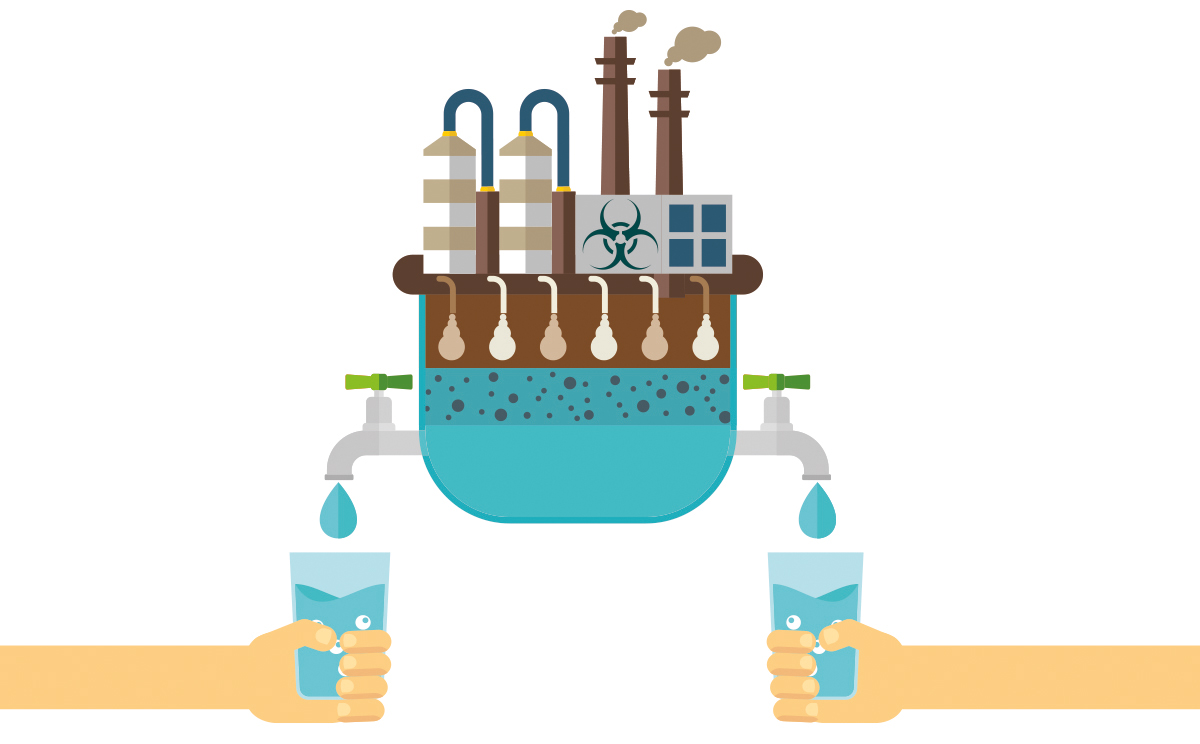Investing in Desalination Technologies: Sustainable Solutions for Water Scarcity

Investing in desalination technologies is crucial for addressing global water scarcity. With rising populations and climate change, fresh water is becoming harder to find. Desalination offers a sustainable solution by turning seawater into drinkable water. This technology not only supports agriculture but also boosts economies in water-stressed regions. As we explore the latest advancements and benefits of desalination, it’s clear that this investment can transform communities and secure our future. Understanding its potential is vital for anyone interested in sustainable development and resource management.
Key Takeaways
- Investing in desalination technologies can significantly help address global water scarcity, making it essential for governments and businesses to consider these solutions.
- Understand the benefits of desalination, such as providing a reliable water source and reducing dependence on freshwater supplies.
- Stay informed about emerging advancements in desalination, like energy-efficient methods and innovative materials that can lower costs and increase output.
- Look at successful desalination projects worldwide as models for best practices and potential partnerships in your region.
- Consider the environmental impact of desalination technologies and support initiatives that promote sustainable practices within the industry.
- Engage with local stakeholders to raise awareness about the importance of investing in desalination as a viable solution to water scarcity.
Understanding Desalination and Its Role in Water Scarcity
What is Desalination
Desalination is the process of removing salts and minerals from seawater or brackish water. This technology provides fresh water to regions with limited freshwater resources. It plays a crucial role in addressing global water scarcity issues. Many places, especially arid regions, rely on desalinated water for drinking and agriculture.
How Desalination Works
Desalination operates on basic principles like reverse osmosis and distillation. In reverse osmosis, water passes through a membrane that blocks salt and impurities. Distillation involves boiling water to create steam, which leaves salts behind. The process includes several stages: pre-treatment removes larger particles, desalination separates salt, and post-treatment ensures water quality. Technologies such as membranes and heat exchangers are essential for effective separation.
Saltwater Sources for Desalination
Primary sources for seawater desalination include oceans and seas. These vast bodies of water provide a nearly endless supply of saltwater. Brackish groundwater serves as an alternative source, offering less saline options. Saline lakes and estuaries present potential resources for desalination efforts. Using these sources can help meet the growing demand for fresh water.
Benefits of Investing in Desalination Technologies
Sustainable Water Supply
Desalination plays a crucial role in providing a continuous and reliable water supply. It can supplement traditional water sources, especially during droughts. This technology helps maintain water availability for agriculture and industry. Farmers can irrigate crops even when rainfall is low. Industries can operate without interruptions due to water shortages.
Environmental Considerations
High energy consumption is a significant concern with desalination processes. Energy-intensive methods can increase costs and carbon emissions. Brine discharge also poses risks to marine ecosystems. The salty waste can harm aquatic life if not managed properly. Integrating renewable energy sources, like solar or wind, could help reduce these environmental impacts.
Key Advantages of Desalination Plants
Desalination plants offer a consistent and drought-proof water supply. They ensure that communities have access to clean water regardless of weather conditions. Economic growth benefits from this availability. Industries thrive when they do not face water shortages. Desalination reduces reliance on over-extracted surface and groundwater resources. This shift helps preserve these vital natural resources for future generations.
Emerging Advancements in Desalination
Innovations in Membrane Technology
Advancements in reverse osmosis membranes have significantly improved efficiency. New materials, such as graphene, enhance performance and reduce costs. These membranes allow for greater water flow while using less energy.
Nanotechnology also plays a key role. It enhances membrane durability and reduces fouling. This means membranes last longer and require less maintenance. Overall, these innovations make desalination more effective.
Energy Recovery Devices
Energy recovery devices are crucial for reducing energy consumption in desalination plants. They capture energy from the high-pressure brine stream and reuse it. Types of devices include pressure exchangers and turbines.
These devices lower operational costs and increase sustainability. By recovering energy, plants can operate more efficiently. This innovation makes the process more cost-effective.
Lowering Desalination Costs
Strategies exist to reduce operational costs in desalination. Energy-efficient technologies are a primary focus. Large-scale projects benefit from economies of scale, which lower per-unit costs.
Government subsidies and incentives can further help. These financial supports reduce barriers for new projects. They encourage investment in desalination technologies, making them more accessible.
Successful Desalination Projects Around the World
Notable Global Projects
Saudi Arabia leads in desalination with the Ras Al Khair plant. This facility produces over 1.5 million cubic meters of water daily. The UAE also invests heavily, with the Mohammed bin Rashid Al Maktoum Solar Park powering its plants.
In the United States, California has notable projects like the Carlsbad Desalination Plant. It supplies around 50 million gallons of water each day. Other facilities in Florida and Texas are also expanding to meet local needs.
Asia Pacific is seeing growth too. Australia’s Sydney Desalination Plant operates since 2010, providing a reliable water source during droughts. China is developing various plants to support its growing population.
Lessons Learned from Projects
Technical challenges exist in desalination operations. Many projects faced issues with energy consumption and membrane fouling. Solutions often involve advanced filtration technologies and better maintenance strategies.
Community engagement plays a crucial role in project success. Public acceptance can determine funding and support. Involving local communities helps address concerns and build trust.
Integrating renewable energy is another key lesson. For instance, some plants use solar or wind power to reduce costs and environmental impact. These examples show how sustainability can enhance desalination efforts.
Future Prospects
Global desalination capacity may double by 2030. Regions like Asia Pacific and the Americas will likely see most of this growth. Technological advancements will improve efficiency and reduce costs for future projects.
The Future of Desalination Technologies
Improving Sustainability
Renewable energy sources can greatly enhance desalination processes. Solar and wind power reduce reliance on fossil fuels. This shift promotes sustainable practices in water production. Minimizing brine discharge is also crucial. Techniques like zero-liquid discharge can lessen environmental impacts. Continuous research and innovation are vital for developing these methods.
Reducing Costs and Enhancing Efficiency
Advanced technologies play a key role in lowering operational costs. Innovations such as reverse osmosis membranes increase efficiency. Modular and scalable desalination units offer flexibility to meet demand. These units can be deployed quickly in various locations. Automation and AI can optimize plant operations, leading to reduced labor costs and improved performance.
Ongoing Innovations
Current research focuses on improving membrane technology and energy recovery systems. Scientists explore new desalination methods like forward osmosis. Pilot projects test these innovative approaches in real-world conditions. Collaborations between governments, academia, and industry are essential for driving this progress. These partnerships help share knowledge and resources, accelerating advancements in desalination technologies.
Final Remarks
Investing in desalination technologies is crucial for tackling global water scarcity. You’ve seen how these innovations can transform water access, improve sustainability, and drive economic growth. The benefits are clear—reliable water sources, advanced techniques, and successful projects worldwide show that desalination is not just a dream but a reality.
Now is the time to act. Support initiatives that promote desalination investments. Advocate for policies that prioritize sustainable water solutions. Your involvement can help shape a future where clean water is accessible to all. Embrace these technologies and be part of the solution to one of our planet’s most pressing challenges. Together, you can make a difference.
Frequently Asked Questions
What is desalination?
Desalination is the process of removing salt and impurities from seawater or brackish water to produce fresh, drinkable water. It plays a crucial role in addressing global water scarcity.
Why should we invest in desalination technologies?
Investing in desalination technologies can provide sustainable solutions to water scarcity, ensuring access to clean water for communities and industries while reducing reliance on traditional freshwater sources.
What are the benefits of desalination?
Desalination offers numerous benefits, including increased water supply, drought resilience, and enhanced agricultural productivity. It also supports economic growth by providing reliable water sources for various sectors.
What advancements are being made in desalination technology?
Emerging advancements include energy-efficient processes, improved membrane technologies, and innovative pre-treatment methods. These developments aim to reduce costs and environmental impacts while increasing efficiency.
Can you provide examples of successful desalination projects?
Yes, notable projects include the Sorek Desalination Plant in Israel and the Carlsbad Desalination Plant in California. Both have significantly contributed to local water supplies and set benchmarks for future initiatives.
What is the future of desalination technologies?
The future of desalination looks promising with ongoing research aimed at enhancing efficiency and sustainability. Innovations may lead to lower costs and reduced environmental footprints, making desalination more accessible worldwide.
How does desalination impact the environment?
While desalination can help alleviate water scarcity, it may have environmental impacts, such as marine life disruption and high energy consumption. Sustainable practices are essential to minimize these effects while maximizing benefits.
 Send Buck a voice message!
Send Buck a voice message!




